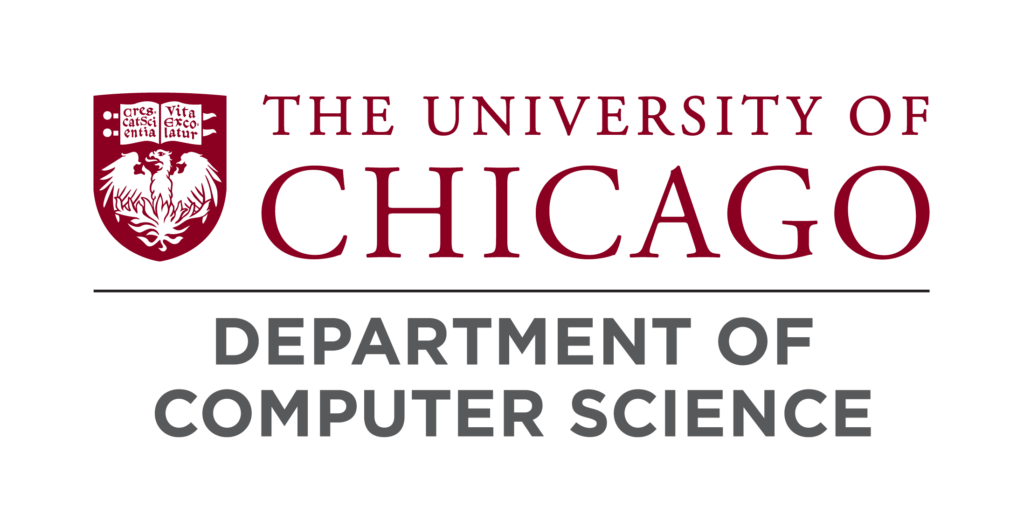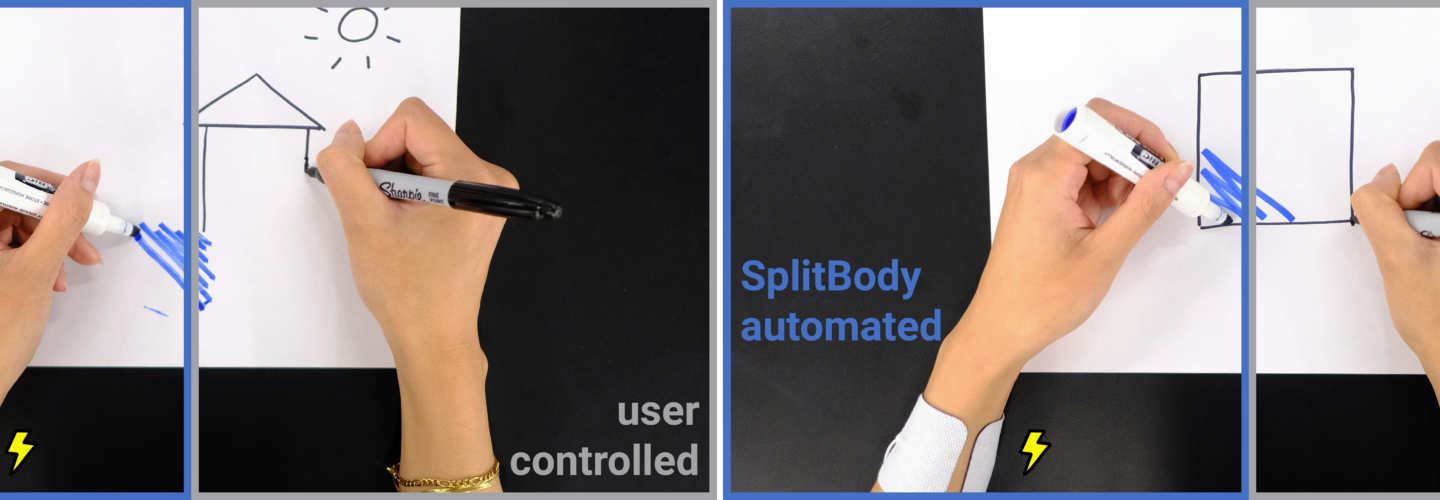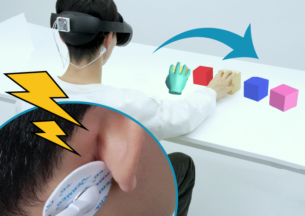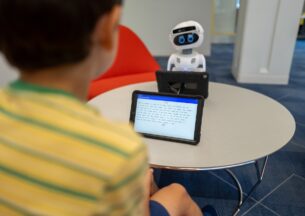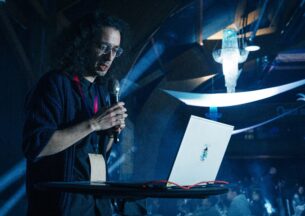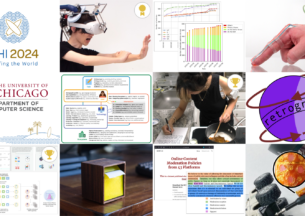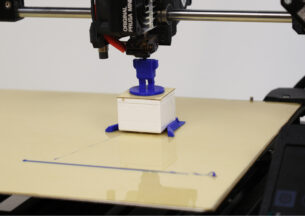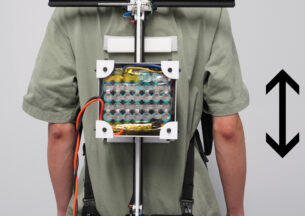Enhancing Multitasking Efficiency: The Role of Muscle Stimulation in Reducing Mental Workload
As society becomes increasingly efficient and connected, people experience the mounting pressure to be as productive as they can be at all times. This has often led to multitasking, which is a key feature of almost all computer interfaces—they allow us to more easily and quickly perform many tasks at once. However, the same cannot be said for physical tasks. For example, imagine cooking and drafting an essay at the same time — here computing technologies do not provide much in the way of assistance to ease the burden of concentrating on the two physical tasks. In Associate Professor Pedro Lopes’ Human Computer Integration lab at the University of Chicago’s Department of Computer Science, fifth-year PhD student Romain Nith and incoming PhD student Yun Ho wondered whether it was possible to partially automate the multitasking process by incorporating muscle stimulation technology.
Electrical muscle stimulation has been used for decades in the field of rehabilitation and physiotherapy. It consists of delivering a small electrical impulse via electrodes placed on the user’s skin, atop of a muscle. This causes the muscle to involuntary contract. In other words, it moves the body via electricity. Although Nith received his Bachelors in computer engineering at McGill University, he had the opportunity to work on a muscle stimulation project through Lopes’ lab as his senior capstone. This internship encouraged him to further pursue his interest in muscle stimulation by joining Lopes’ lab as a PhD student.
“The lab works a lot with muscle stimulation, but always in a way that it performs tasks for the user, e.g., you are trying to gesture in sign language and the muscle stimulation completes the gesture for you,” Nith said referring to his past work at ACM UIST 2021 (which is also featured in the Guinness Book of World Records) . “However, for SplitBody, we took a different turn from the existing applications of muscle stimulation. One day we thought, what if we put this in the background and automate some repetitive task? We decided to conduct a user study to find out if people actually do multitask better with muscle stimulation.”
In their recent paper titled SplitBody: Reducing Mental Workload while Multitasking via Muscle Stimulation, Nith and Ho studied whether electrical muscle stimulation (EMS) would ultimately be more or less distracting for a user that is performing two demanding physical tasks at once (multitasking). They designed a user study that involved both a cognitive task (dominant hand) and a movement task (non-dominant hand). The cognitive task involved the use of a 2-back test, where participants were given a series of letters and asked to recall if the current letter matched a previous letter. The movement task involved doing a sequence of hand gestures (up, down, left, right) in a non-repetitive order. The twelve participants were asked to perform the multitask twice, once as a baseline, or control, experiment where the participant performed the multitask by themselves. In the second experiment, EMS was used to perform the second task.
The paper envisions several applied scenarios where EMS may be helpful. Split-chef involves preparing caramel while writing an essay, Split-draw enables synchronous shadow drawing and coloring while  sketching, Split-drum involves learning to drum one limb at a time, and Split-musician involves alternating foreground and background musical tasks. In all of these examples, one movement is the main focus (the cognitive task) while the other is more monotonous (the movement task).
sketching, Split-drum involves learning to drum one limb at a time, and Split-musician involves alternating foreground and background musical tasks. In all of these examples, one movement is the main focus (the cognitive task) while the other is more monotonous (the movement task).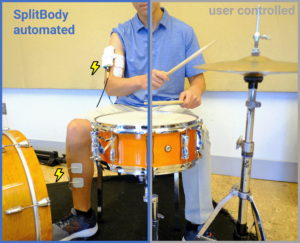
Lopes envisions a new world of interfaces enabled by these findings. “Computers have transformed the way people learn cognitive skills, but haven’t done much for physical skills,” he stated. “The best interface these days for a new skill is watching a video. But with our body-integrated devices that directly move the user’s body, we can enable someone to learn a complex physical skill piece by piece. For example, in one of our demonstrations, you can learn how to play the drums by having the muscle stimulation take care of the tricky musical parts that you cannot multitask, like the syncopation between the cymbal and the kick drum, while you focus on a simpler movement such as playing the snare—this is a completely new way to have interfaces that act on the real world and assist us with physical tasks”.
In addition to refining the tests for the multitask, Nith and Ho also heavily considered the safety and ethics of conducting such an experiment. In their paper, they stated that “any interactive system with the capability of moving the body must be ethically designed by grounding it in the principles of user-agency & safety”. They intentionally designed the SplitBody EMS system to be easily activated and deactivated by the participant themselves, emphasizing the user’s own agency during the process. The authors only used external methods of application to connect the SplitBody hardware. Most importantly, the system ensures that the user’s limbs remain under their full control by only activating a subset of muscles for each task with measures to override and turn off the stimulation.
“There are robots that vacuum for you, like the Roomba,” Nith explained. “Some robots are cooking for you. Our phone automates a lot of things. And now we’re moving to automation in the cloud, like ChatGPT. All that is great, but the issue is that the user is losing agency — sometimes you don’t even know that these things are happening in the background. With this project, we tried to give back to the user some of that agency while still keeping the automation part of the conversation.”
Ultimately, EMS was found to increase the efficiency of multitasking, but there is a lot more to explore. To dive deeper into this topic, Nith and Ho are interested in exploring how muscle stimulation affects the user and how it could be made more transparent and trustworthy to the user. Nith is also keen on investigating whether EMS could be used to teach specific motor skills, such as playing the piano or drumming. To learn more about Nith and his work at the Human Computer Integration lab, please visit their website here.
